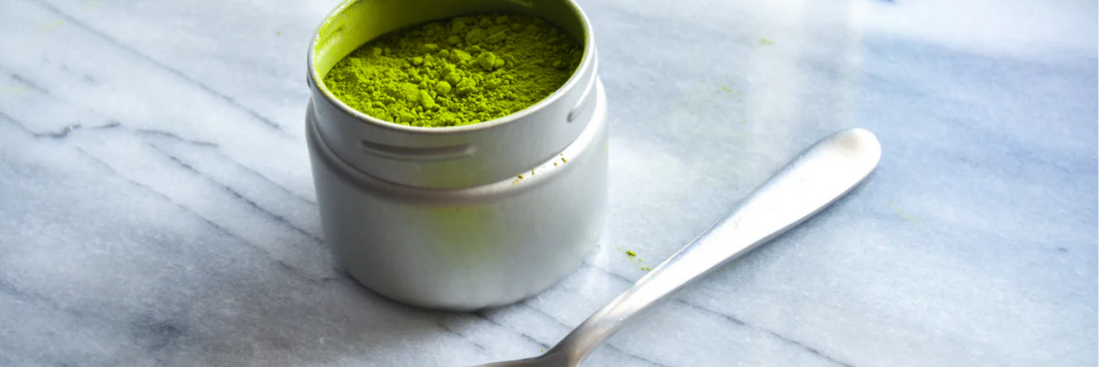Matcha is one of the most delicate and vibrant green teas in the world. Its flavor, aroma, and health benefits depend heavily on how you store it. Improper storage can lead to loss of color, flavor, and antioxidants. In this guide, we will explore how to store matcha to maintain its freshness, taste, and nutritional value.
-
Matcha Powder – Complete Guide to Matcha Green Tea Powder (2025)
-
Matcha vs Coffee: Which One Is Better for Energy, Health, and Focus?
-
How to Make Matcha Tea: A Complete Step-by-Step Guide
Why Proper Matcha Storage Matters

Matcha is finely ground green tea powder, rich in chlorophyll and catechins. Exposure to heat, light, oxygen, and moisture can degrade its quality. Storing matcha incorrectly leads to:
- Loss of vibrant green color
- Flat or bitter taste
- Reduced antioxidant potency
- Clumping or mold formation
Even high-quality ceremonial matcha can deteriorate in days if not stored properly. Understanding matcha storage best practices is essential for daily tea drinkers and tea enthusiasts.
The Science Behind Matcha Storage

Matcha deteriorates primarily due to:
- Oxidation – When exposed to air, chlorophyll and catechins break down, affecting color and flavor.
- Moisture – Absorbs water easily, causing clumping or mold.
- Light exposure – UV light accelerates chemical reactions that fade color.
- Temperature fluctuations – Rapid changes in temperature can condense moisture inside containers.
- Odor absorption – Matcha can pick up smells from other foods if stored improperly.
Ideal Environment for Storing Matcha

To maintain peak freshness, store matcha in cool, dark, and dry places:
- Temperature: Room temperature (18–22°C) is suitable for short-term storage. For long-term, refrigeration or freezing is recommended.
- Humidity: Keep below 50% to avoid clumping.
- Light: Use opaque containers to block sunlight.
- Odor-free: Avoid storing near coffee, spices, or strong-smelling foods.
- Stable conditions: Minimize frequent temperature changes.
History of Matcha: Origins, Rituals, and Global Rise
Choosing the Right Container
The container is crucial for storing matcha powder:
- Airtight & opaque: Prevents oxygen and light from degrading matcha.
- Best materials: Metal tins, dark ceramics, or food-grade aluminum.
- Avoid clear glass or plastic unless double-layered with foil.
- Vacuum-sealed or nitrogen-flushed containers provide maximum freshness.
- Original packaging can be kept inside another sealed container for added protection.
Step-by-Step Guide: How to Store Matcha

- Clean and dry your workspace to avoid moisture contamination.
- Transfer matcha from the original package to your storage container carefully.
- Remove air by gently pressing down or using a vacuum pump.
- Label the container with the date opened and batch.
- Seal tightly and ensure no air leaks.
- Choose storage location based on usage: pantry for daily use, fridge/freezer for long-term storage.
Short-Term vs Long-Term Storage
- Short-term (daily/weekly): Keep in a cool, dry pantry, away from light and odors.
- Medium-term (1–3 months): Airtight container in fridge, using minimal exposure to humidity.
- Long-term (6+ months): Split into smaller portions, vacuum-sealed, stored in freezer.
Storing Matcha in the Fridge or Freezer
- When to refrigerate/freeze: Only if you have high-grade matcha or bulk quantities.
- Avoid condensation: Let the container warm up before opening.
- Double sealing: Use an airtight container plus original packaging.
- Check shelf life: Refrigerated matcha lasts 3–6 months, frozen matcha up to a year.
- Risks: Moisture or odor absorption; avoid frequent opening.
Signs Your Matcha Has Gone Bad

- Color changes: Bright green → dull olive or brown
- Loss of aroma: Flat or off-smell
- Taste: Bitter or lacking umami
- Texture: Clumps or damp spots
- Expired but safe: Can still brew, though flavor may be compromised
Troubleshooting Common Problems
- Gray or brown matcha: Usually due to light or oxygen exposure
- Clumping: Moisture or frequent opening
- Odor absorption: Store away from aromatic foods
- Mold: Indicates improper sealing or humidity exposure
- Loose lid / air leaks: Reduces shelf life
Everyday Matcha Storage Tips

- Buy small batches if using regularly.
- Rotate stock: First in, first out.
- Use desiccant packs for added moisture control.
- Dry utensils only to scoop powder.
- Travel storage: Carry in small, airtight tins.
FAQ
1. Should matcha be refrigerated after opening?
Yes, for long-term storage or high-quality matcha. Short-term use can remain in a cool pantry.
2. Can I store matcha in the freezer?
Yes, but always double-sealed and use minimal handling to prevent moisture.
3. How long does matcha last after opening?
Typically 1–3 months at room temperature; up to 6 months refrigerated.
4. Does matcha go bad?
Yes, it can become stale or lose flavor and color, but it rarely becomes unsafe.
5. What kind of container is best for matcha?
Airtight, opaque metal or ceramic container. Avoid clear glass unless double-layered.
Summary & Key Takeaways
- Store matcha in cool, dark, dry conditions.
- Use airtight, opaque containers to block air and light.
- For long-term storage, refrigerate or freeze in small portions.
- Always check freshness: color, aroma, taste, and texture.
- Handle matcha carefully with dry utensils and minimal exposure.






